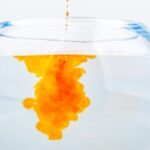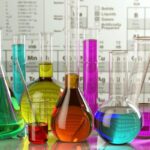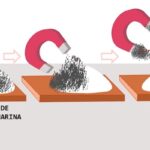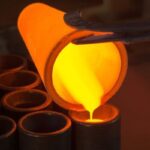We explain what crystallization is and what this chemical process consists of. Also, the methods used and examples of crystallization.

What is crystallization?
A chemical process in which a gas, a liquid or a solution is transformed into a set of solid crystals. Such crystals are formed by an ordered set of rigid molecular bonds that are pure in their elemental nature. Because of this, crystallization can be used as a method to separate the solid components of some homogeneous mixture, that is, it can be used as a purification method.
There are different crystallization methods, which can use the selective alteration of the physical conditions of temperature or pressure, as well as the addition of certain chemical substances. The shape, size and quality of the crystals thus obtained will depend on the specific conditions in which the process occurs and the time during which it is allowed to occur.
The crystals obtained by this method are solid formations, endowed with a very well-defined diffraction pattern (a phenomenon that consists of the deflection of a wave when it passes through an obstacle through a small hole and then propagates in all directions behind this hole). Depending on the conditions under which crystallization takes place and the type of substance to be crystallized, the crystals obtained will have a specific color, a certain transparency and a defined geometry.
The crystals are common in mineral nature and are classified according to their properties into:
- Solid crystals They are the most numerous. With the exception of glass and some amorphous solid substances (solid substances in which their particles are not ordered, that is, they lack shape), almost all solid matter is in a crystalline state. For example: salt, sugar and some precious stones.
- Luminous crystals They are considered liquids and are usually used in the screens of electronic equipment.
- Ionic crystals They are hard and brittle. The cations and anions that form them are of different sizes and, in general, these crystals have high melting points. For example: potassium chloride (KCl) and zinc sulfide (ZnS).
- Covalent crystals The atoms that compose them are joined by covalent bonds forming a three-dimensional network. For example: graphite and diamond.
- Molecular crystals Its particles are linked by Van der Waals forces (attractive or repulsive forces between molecules, interactions that are less than those corresponding to a chemical bond) and/or hydrogen bond interactions (attractive interactions between a hydrogen atom bonded to a hydrogen atom. electronegative, with another electronegative atom that belongs to another molecule, these interactions are also less than those corresponding to a chemical bond). These compounds are usually brittle and their melting points are below 100 ºC. For example: tetraphosphorus (P4) and diiodine (I2).
- Metallic crystals Metallic crystals are made up of atoms of the same metal. They are generally very dense and their properties (such as melting point and hardness) vary depending on the type of metal. On the other hand, these compounds are good conductors of heat and electricity. For example: nickel (Ni), iron (Fe) and cobalt (Co).
See also: Inorganic compound
Examples of crystallization

- Frost formation. Under certain conditions of environmental humidity, water vapor in the air can crystallize directly on cold surfaces (such as glass or metals) and form snow-like structures, called frost. Some freezers tend to form frost as well. These are water crystals, whose constitution is very regular and very well formed.
- Freezing of water Ice is frozen water and, as such, is not a crystal. But during the first phases of freezing of this liquid, dendrites (crystals in which the crystalline orientations are all different) and other submerged crystalline structures can be seen emerging.
- Evaporation of sea water. To obtain salt crystals, as well as desalinated water, water taken from the sea is usually boiled. In this way, the liquid is transformed into a gas (water vapor) leaving the salts that were dissolved in the container, which remain as perfect salt crystals.
- Silver crystals for photography. Silver crystals are useful for certain artifacts from the film industry or old photography (not digital, obviously) since, being sensitive to light, these crystals rearrange themselves in the face of light, thus copying the light impression. To obtain them, compounds such as silver bromide, chloride or iodide are used.
- Calcium oxalate crystals Formed by the accumulation of salts and calcium in the kidneys, these crystals are usually painful for humans, and sometimes surgery is required to remove them, as they hinder the normal expulsion of urine. They have the shape of small dark stones, known as kidney stones, or also “stone” or “grit” in the kidneys.
References
- «Crystalography» at CSIC.





